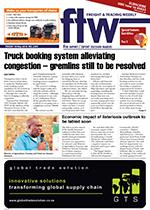Despite the optimism and prospects, companies wanting to do business in East Africa would do well to “wake up and smell the coffee”.
The idiom according to Farlex Partner Idioms Dictionary means “become aware of the realities of a situation, however unpleasant”.
Challenges in the “birthplace of coffee” identified by respondents to an FTW survey range from insufficient connectivity between South African and East African ports and infrastructural constraints to bureaucracy and corruption.
More than half of the respondents believe that South African companies are being outmanoeuvred in the region.
This leads to a chickenand-egg situation where there is insufficient demand for South African exports to support the establishment of more efficient logistics networks serving two-way trade with the region, and as a result South African exports are less competitive – and vice-versa for East African exporters.
The window of opportunity for South African companies may be narrowing. Captain Faisal Sultan of Transnet National Ports Authority in Port Elizabeth warns that the deepening of seaports along the East African coastline will open up the countries to direct shipments, with a decrease in transhipments from South Africa to the region.
This would reduce any competitive advantage South African companies enjoy in terms of logistics costs.
He points out that road and rail connections are not always a viable alternative to seafreight. The challenge for rail is the different track gauges in the region, combined with deteriorating infrastructure and corruption at the borders, he adds.
Moffat Andanje of Procet Freight also warns of growing trade barriers. “Ethiopia and Tanzania are insisting on local manufacturing, while Kenya has a few manufacturing companies that dominate East African markets”.
This trend was confirmed in March by Kenya’s Minister for EAC and Northern Corridor Development, Peter Munya. Speaking at the 20th anniversary of the founding of the East African Business Council (EABC), he said the region was currently a net importer of various commodities and advised governments to prioritise industrialisation.
Kenya has singled out the automotive and apparel sectors for development in its “Big Four” agenda. The “Big Four” are increasing the share of manufacturing in the economy, improving food security, the delivery of affordable housing, and the provision of universal health coverage. Some progress is being made in addressing the challenges, according to the respondents.
“Most areas are now accessible, although there are still many regulations,” says Andanje.

